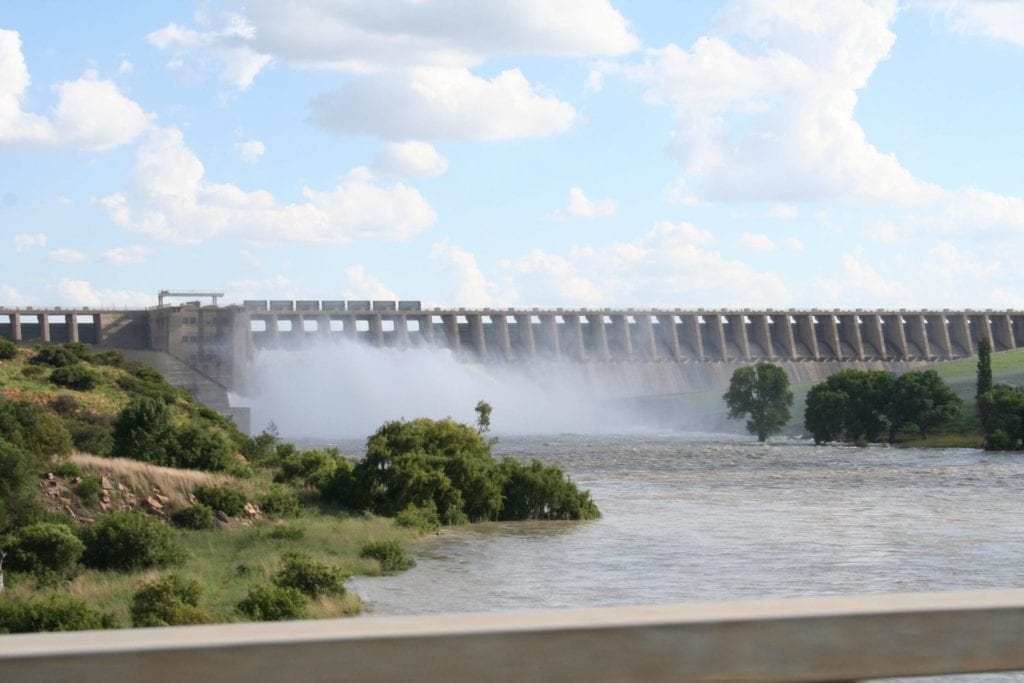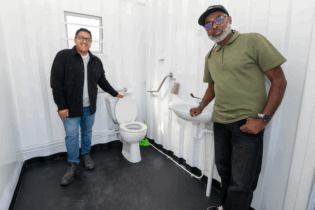
The Vaal Dam. Photo: DWS
Dam levels have seen a general steady decline since April 2014 when the drought began. Over the past two years, dams have averaged at 38% lower. Current levels are down to 51.4%, almost 19% lower than this time last year. A further decrease of approximately 10% is expected before a recovery can begin with the rainy season fast approaching.
A drought declaration has been declared in Gauteng, however SA’s other eight provinces remain drought disaster areas.
According to the Department of Water and Sanitation (DWS), approximately 74.8% of SA’s settlements (about 45 million people) were impacted by the effects of the drought at its peak, from December 2015 to January 2016. However, by June 2016 the number of people affected decreased to 22 million.
In numbers: dam levels
KZN dams have all seen week on week increases. The Umgeni Dam system is at 45.1%, 0.8% up from last week, while Hazelmere Dam has reached 63%, 2% up from last week. Restrictions have also been lifted for Hazelmere Dam users, but water levels will be kept below 64% to ensure the safety of construction workers.
Other KZN dams remain dangerously low as recent rainfall has not contributed significantly enough to reservoir levels. The Klipfontein sits at 12.4%, Hluhluwe at 17.9% and Goedertrouw Dam at 17.3%.
Further inland, the Vaal Dam has decreased by 18.7% over the last year and is currently at 51.8%. Water will be released from the Sterkfontein Dam when the Vaal reaches 25%, which could be in eight weeks according to the DWS’s assessment. The Sterkfontein and Grootdraai are at 90.2% and 72.1% respectively.
The Gariep Dam has seen a minor decrease, sitting at 57.7%, and Van Der Kloof is 61% full. The Polokwane System has decreased to 32.7%.
Required support
Reprioritised support grant funds for water and wastewater infrastructure refurbishment and development are some of the measures put in place to aid municipalities. 168 mobile water tankers and sixteen 80 kl storage reservoirs have also been provided, along with the assistance to refurbish over 1500 boreholes.
Emergency schemes including water transfers and an increased water supply from the Usuthu Water Transfer Scheme to Mpumalanga municipalities have also been put in place.
To maintain an effective supply of water during the drought, restrictions have been placed at 37 dams nationwide and restriction notices are currently being drafted for 11 more dams.
Major challenges, main solutions
Water users who are reluctant to abide by the implemented restrictions remain a major challenge
Some of the main solutions to curb the water crises are to monitor more dams on a weekly basis; upgrade and maintain monitoring systems for surface and sub-surface water; and to continue to improve water conservation and demand management protocols.
Improving the communication of deteriorating weather conditions and performing detailed risk assessments for each province have also been noted as key solutions that will aid drought response.









